İngilizce öğretici oyunlar, nasıl oynanacakları ile ilgili açıklama, English games. İngilizce olarak oyunların nasıl oynandığının anlatıldığı sayfamız.
LANGUAGE GAMES FOR TEACHERS
Whispering Trees…
Get the students standing in a line. Stand at one end and whisper a short phrase or sentence in the ear of the student next to you. For example, you could say, ‘My dad once met Bernard Cribbins in a bus queue in Dover.’ Each student repeats the phrase to their neighbour until you get to the end of the line, when the last student tells the class the sentence they heard, and you can reveal what the original sentence was. A good game for practising listening and speaking skills.

What Time Is It On…?
A good one for testing telling the time, and as a general reading comprehension using realia. Select a page from the Radio Times, or any English language TV guide and photocopy it so that each student can have a copy. Split the group into two teams and ask them questions based on the programme information given in the TV guide.
For example, you could ask, ‘What time is The A Team on?’, and ‘What time does The A Team finish’, before moving onto more complex reading comprehension questions such as, ‘What is the name of the actor who plays Face in The A Team’ and (if there is a capsule description) , ‘What happens in this episode of The A Team?’ Get the students to nominate a ‘runner’ for their team who runs and writes the answer on the board. You can even get them drawing clock faces as an answer, or writing the answer using the twenty four hour clock. Note: questions need not be A Team-based.
Whats My Line?/Whats My Addiction… ?
Another guessing game, which was once the basis of a TV game show. This time you think of a job, and students have to guess what it is you do by asking questions, to which you can only answer ‘Yes’ or ‘No’. Once youve modelled the game get students to sit in the hotseat, while you take a back seat and let them get on with it. An interesting twist is to play ‘Whats my addiction?’, where students have to guess what the facilitator is addicted to.
They could be addicted to anything, from holidaying in Scarborough, to eating corned beef sandwiches in the garden with a pink woolly hat on. The more outlandish the better, as it makes it harder for the students to guess and they have to try harder! You could of course use any vocab set. The principle of the games stays the same. A quick game of ‘Whats my piece of furniture?’, anyone?
Party invitations:
The whole class sits in a circle. Tell them that its your birthday next week and that youre planning a birthday party. They are all invited…on one condition. They must bring you a present, and it must be something that you really want. Each student in turn tells you what they will bring to give you on your birthday. You will either tell them that they can come, or that they are not invited. This depends on what they offer to bring you. The item theyre going to bring must begin with the same letter as your first name.
If it does, they can come; if it doesnt, they cant. For example, if your name is Lucy and they offer to bring ‘a lemon’ as a present, they will be welcome. If they offer to bring ‘a bottle of wine’ they will be given short shrift! This game is hilarious, as some students will twig onto your ‘unspoken rule’ fairly early on, while some wont get it at all, however obvious you make it!
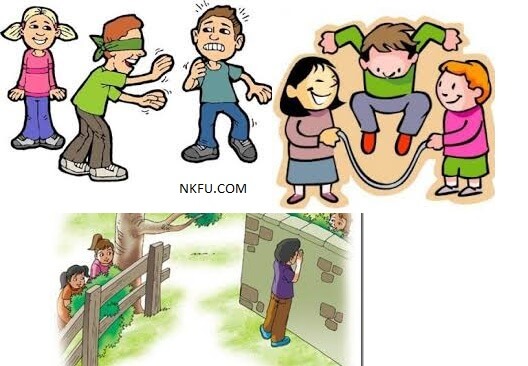
Board Game Boffins…
As a project get the students working in pairs or small groups to design a new board game. They have to form a games ‘company’, then plan the concept and design of their game. After that they have to actually make a working prototype, which they test out, and which is then tested along with all the other ideas in a games tournament. Each company has to explain the reasons behind the design choices that they made in constructing their game. The students then all vote for their favourite games in categories such as: ‘Most playable game’, ‘Game most likely to make a $million’, ‘Best design and construction’ , and so on.
Class Secrets…
Get the group together and ask one of them to leave the room. Once theyve gone, think of a ‘secret’ about that person, for example, its their birthday, or theyre having an affair with the college principal. That kind of thing. When they come back in, they have to guess the secret truth about themselves by asking questions. The rest of the group give clues. A great ice-breaker, this one always raises a laugh.
Hangman…
Another good letters-based game. Its good because students can get up and lead this one just as well as the teacher. Its also good because its quick and can pull students together for a quick bit of group work just before going home. Think of a word or phrase and draw a number of dashes on the board that corresponds to the number of letters. The other students suggest one letter at a time. If they are correct you have to fill in the letter on the board in its correct place. If they are incorrect you draw part of the hangman shape. Students can take a guess if they know the word. The person who guesses correctly steps up to the board to think of a word for the next session.
What Is Going On (In The World)…?
Probably better for an intermediate or advanced class, this one. Prepare twenty questions, based on what is happening in the news (be it local, national or world news). You could include spelling questions too, and questions about different members of the class, for example, ‘Which country does Louisa come from?’ Split the class into two teams and youre ready to play. Give five points for a correct answer, and bonus points at your discretion for any extra information that the students give in their answer. If the first team doesnt know the answer, hand it over to the other team for a bonus point.
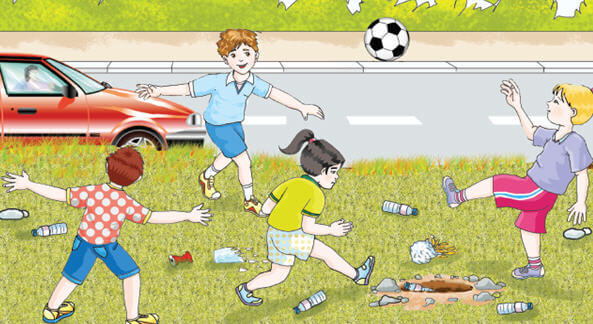
Name & Explain…
This is a good game for practising spelling furniture words and getting students to talk about their immediate environment. Split the class into two groups and give each group a pack of sticky labels. Their task is to write labels and stick them on twenty different things in the classroom. Spellings must be correct, and at the end of the game students must give you a tour of their labelled items, explaining what each object is.
A Capital Game…
Write a load of nouns on the board, both common nouns and proper nouns, but dont use capital letters. Vary the list of words to suit the level of your group, so for an elementary class you could write something like: ‘table, usa, book, house, garden, england, philip, the times, shirt, ice cream, …’ and so on. The students split into two groups and compete to be the first to write the list of words again, but this time putting capital letters on the proper nouns (in this example, ‘USA, England, Philip, The Times’).
Get A Move On…
Split the class into two teams. Set a starting line and a finishing line. This is basically a slow-walking race, where both teams are competing to be the last to cross the finishing line. The only proviso is that everyone in the race must keep moving forward – just very slowly. Its also good fun played with individuals in heats, building up to quarter finals, semi finals and a grand final. A fun team-building activity that will bring out the team dynamics of your group.
Just A Minute…
The basis of a popular BBC Radio 4 panel game, this works better with advanced students. Players have to speak for one minute on a topic given by the teacher, for example, ‘Going on holiday’. The twist is they cant repeat words (apart from articles and very common conjunctions such as ‘and’), they mustnt pause or hesitate at any point, and they mustnt deviate from the English language. Youll need to listen carefully for repetitions, hesitations and deviations, as should the students, who have to put their hand up to report a mistake. If you agree that the student speaking has made a mistake, the topic passes to the player who spotted it first, and the minute continues to tick down. Players get a point for every correct intervention, and a point if they are talking when the minute is up. If a player has been wrongly interrupted – i.e. you
Interesting Articles…
Similar to ‘A Capital Game’, this involves writing plenty of different nouns on the board getting the class – in two teams – to discuss and write down whether there should be ‘a’ or ‘an’ before the word. This is a quick and easy game, intended for elementary students really, that allows the students to identify and practise the grammar rule for articles.
Audio Pictures…
Get the students into pairs, then give one half of the pair a picture from a magazine, for example, a man wearing a hat and coat and playing the piano. They have to describe what they can see, in detail, without showing the picture to their partner, who draws a sketch based on the description. At the end of the description they compare their pictures, before swapping roles. At the end of the session the whole class can see how close all the drawings were to their originals. A good activity for practising communication and listening skills, and giving descriptions.
I-Spy…
Students can lead this very simple game where they think of something that they can see in the classroom (or wherever you are) and the others have to guess what it is. Students give a clue by saying the first letter, for example, if they are thinking about the clock on the wall, they would say, ‘I spy with my little eye, something beginning with C’. A quick game that gets the students thinking about the vocab relating to their immediate environment.
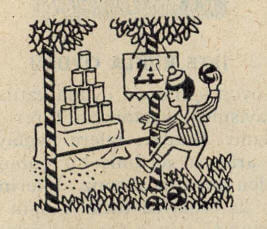
Simon Says…
A party game that works well with English students as a way of practising listening to and understanding commands. The teacher says a number of simple commands, such as, ‘Put your hands on your head’, ‘Stand on one leg’ or ‘Start humming’, and the students have to do what you say – but only if you have prefaced the command with ‘Simon says…’ If you dont say ‘Simon says…’ and the student follows the command, they are out, and the game resumes until there is a winner!
Something’s Different…
Get the whole class together. Ask one of them to leave the room, then get the remaining students to change five things about the classroom. For example, you could put a chair on a table, or get two students to swap jumpers, or anything – so long as its not too subtle. Then bring the student back in and get them to guess what changes you have made
The Yes/No Game…
An old favourite from TV, this is great for practising question and answer forms. Get students up to the front of the class one at a time and ask them questions, about themselves, the weather, the school or college – anything. The student must reply verbally but cannot say the words ‘Yes’ or ‘No’. If they do they are out. Ask someone to act at the timer (and as the ‘gong’ or ‘buzzer’ when each player slips up and is out), and write the times for how long each student managed to go without saying ‘Yes’ or ‘No’ on the board. If the students get the hang of this game they could play it in pairs, with one asking the questions and the other answering, before swapping over roles.
Ace Anagrams…
Based on the TV quiz game ‘Countdown’, students at all levels enjoy puzzling over this game. Its also a good way to get them looking in their dictionaries. Your students suggest nine letters at random, either vowel or consonant, which you write on the board (or you could have cards with them on if youre really organised!). In small groups the students have five minutes to come up with as many (real) words as they can from the original nine letters. The team with the most correctly spelt words gets a point, and the next round begins.
Dead Heat…
The class needs to be in groups of around eight people. Lay out a finish line at one end of the classroom with no desks or chairs in the way. The students stand in a line, as if about to start a race. On your signal they either run or walk towards the finishing line. However, all the students must cross the line at exactly the same time. A fun and energetic warmer which encourages students to talk to each other – particularly when they keep getting it wrong. Give your teams several attempts at this and they should get it in the end.
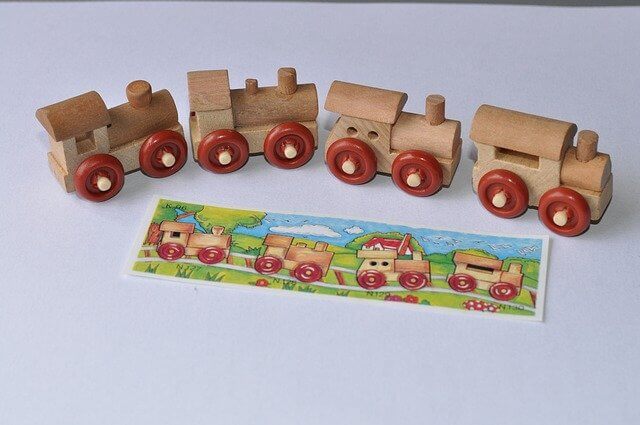
Kaynak: pixabay.com
The Instant Story Generator…
The whole group sits in a circle and comes up with a few story keywords, for example, a place, a mans name, a womans name, an object, and so on. Tell the students they are going to tell a story as a group. Each student can only contribute one word at a time, before the story moves on to the next person. If the story reaches a natural break the student whose turn it is next can say ‘Full stop’ instead of carrying on. The story must include all the keywords that were agreed at the beginning. This is a great game for identifying sentence structure and bringing out grammar points, as well as letting the imagination run riot. A variation is to let each student contribute one sentence instead of just one word.
My Butler Went To Meadowhall…
The title refers to Meadowhall shopping centre near Sheffield. The game is really just a version of My Grandmother Went To Market. Students sit in a circle, away from desks and paper, and so on. Tell the students that you teach because you love it and dont need the money as you are actually rather well off. In fact, you have a butler who goes up to Meadowhall for you every Friday to go shopping for you, and he gets you loads of different things. This week, however, you cant decide what to buy and ask the students to help you. You are going to make a list.
Start with saying, ‘My butler is going to Meadowhall on Friday and will buy me…(think of any item that you can buy in a shop)’. The next person has to say, ‘Your butler is going to Meadowhall on Friday and will buy you…’ whatever you said, plus an item of their own. The list goes around the circle until the last person has to remember the whole list of x number of items. Students will give prompts if other students are struggling. A good vocabulary game, as well as being fun and a test of the memory. Plus they get a laugh thinking about your (imaginary) butler.
Whats In The Bag…?
Have a ‘lucky dip’ style bag, or box, which you can use from time to time for this quick activity that draws the class together in mutual curiosity. Put something different in the bag (or box) each time, for example, a paper clip, or an orange. Students take it in turns to feel inside the bag (or box) – without looking – and then describe what the object feels like and what they think it is. This activity can easily be handed over to the students for them to facilitate among themselves, even using items that they have brought in from home.
Balloon Rodins…
Split the class into small groups and give each a large quantity of balloons and a roll of sticky tape. Their task is to create a fantastic balloon sculpture, which outshines those made by the other teams. After forty five minutes or so the groups come together and look at all the sculptures. Each team has to describe what their sculpture represents – and is welcome to elaborate on the principles of art that they have been influenced by…or not, as the case may be! Prepare for some explosive balloon fun in this team-building and communicative activity. Note: this activity works just as well with modelling clay.
What Shops Sell What…?
This is a similar exercise to ‘Ten Things’, in that the students leave the classroom in pairs or small groups and go around town for a couple of hours. They have to write down the proper names of as many shops as they can, along with a brief description of what you can buy at that shop. For example, ‘Marks and Spencer – clothes and food’, ‘Debenhams – clothes, gifts, and perfume’, until they have a list of around twenty shops. When the students get back they could write sentences about the shops, for example, ‘At Marks and Spencer you can buy clothes and food’.
This works well in the UK as an orientation exercise. It gets students to go into and have a look around shops that they might walk past every day but have never visited. You could always set the list of shops for your students to visit, ensuring a variety of types. Of course, it gives an opportunity to practise shopping vocab wherever you happen to be teaching.
What Is It…?
Get the class into two teams. Take one student from each class out of the room, give them both a whiteboard pen (or chalk stick, or marker, etc.) and give them the name of a book, TV show (for example The A Team), film, or famous person. They have to run back into the room and draw clues on the board, with the other students trying to guess the name that they have been given. Students love this game, and it gets rather loud as the students get more involved. Make sure your students are aware of the cultural references that you want to give them. The game can be played just as well using vocab sets such as, furniture, food, animals, and so on.
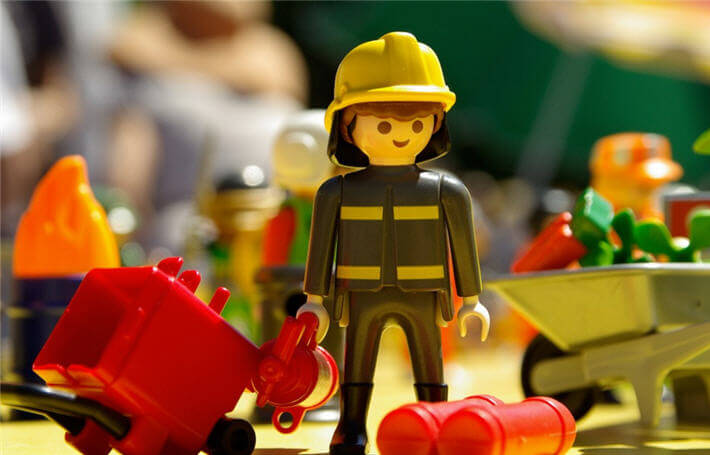
Ten Things…
Get your students to leave the building and go out in small groups or pairs with the task of writing down ‘Ten things you can see at…’ various places near to your college or training centre. For example, they could write down ten things you can see at…the leisure centre, the shopping centre, the sports stadium, the post office, the doctors, the bus station, the railway station, the market, the funfair, and so on. Ask them to ensure their spellings are correct before coming back to you with their list(s). Of course you could always make it ‘Fifty things you can see at…’ if your group are particularly gifted – or you just want to get rid of them for the whole morning…!
Our Living Photo Album…
Ask each student to bring in one or more photographs of something that is important to them, that you can keep to put into a class photo album. Give them time to prepare a two minute talk about their photograph, which could be, for example, of a place, or a family member or an event that has touched their life.
Then sit in a circle with all the students and your ‘living photo album’ will come to life as each student in turn explains why their photo is important or memorable to them. You could make a display with the pictures, or literally fill an album with them that everyone can enjoy looking at. Explain that you will give the photos back at the end of the course (or even the end of the week). This is a good activity to help a relatively new group get to know each other.
What Am I…?
For this game you will need to put a sticker on the back of each student, with a noun written on it, for example, apple, chair, Wednesday, bathroom, or bottle of tomato ketchup. The students have to mingle with one another and ask questions of each other to find out ‘What am I…?’ Students can only reply with either ‘Yes’ or ‘No’. When they have found out what they are they report to you and tell you what questions they had to ask in order to find out what noun they were.
They could then go and write down the different questions. This also works when you use celebrity names instead of nouns – as long as all the students are aware of exactly who all the celebrities are. In my experience they will definitely know Tony Blair. And thats about it! You could also use specific vocab sets such as countries (‘Am I north of the equator, or south?’), or clothes (‘Am I worn on the head?’) The skys the limit! Good for question forms and to get students talking